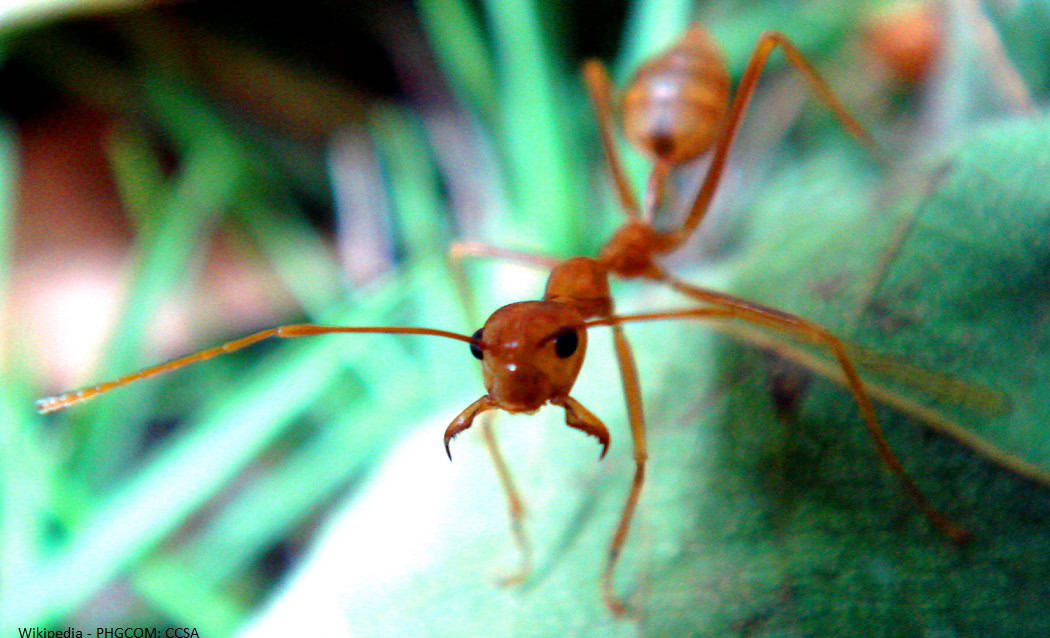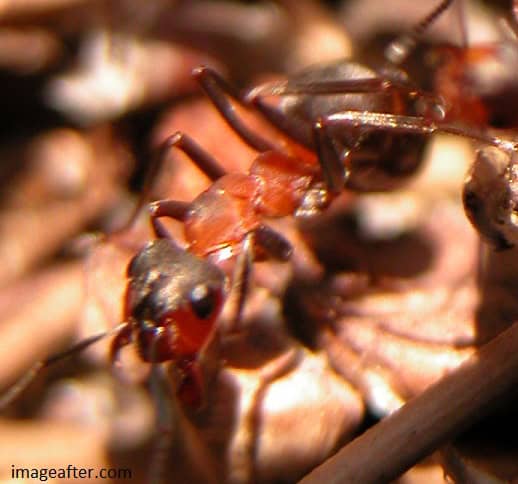The success and survival of ants is due to their social nature. Just like humans, there is strength in numbers. What makes the existence of ants strong and everlasting is a combination of three biological traits: adults care for the young; two or more generations of adults live together in the same colony; and the members are divided into a reproductive “royal” caste and a non-reproductive “worker” caste. This social organization of the ant colony has given ants a competitive edge that has dominated the world.

Inside the Ant Tunnel
Inside the tunnels and caverns of a ant colony are a large working caste of wingless, sterile females and reproductive caste of winged, fertile males and females (virgin queens) and usually one fertile, egg-producing queen. The queen relies on her workers for food and protection.
Workers are responsible for building and maintaining the nest, guarding the queen and larvae from intruders, gathering food, tending eggs, larvae, pupae, and even feeding the queen. Each colony has its own distinct odor, which determines recognition among its members and repels any outsiders.

Tunnels from a large ant mound may extend three feet deep and over six feet from the edges. Of all the other insect movers of planet earth (beetles, termites, wasps, etc.) ants are by far the most remarkable. They excavate huge, organized “cities??? with elaborate mazes of subterranean passages and highways. Ants that form mounds can move several hundred yards of soil within a relatively short period of time.
The communal organization within a ant colony offers significant advantages for ant survival. It increases efficiency with groups of ants performing different “jobs,” and even specialization. One group is skilled at nursery work, tending to eggs and larvae, spending their days moving them around to various chambers, keeping them warm – and at just the right temperature. Other workers have the job of foraging for food. Scouts are sent out to find food and water.

Another group of ants may be great at fighting and act as soldiers, battling enemies and/or capturing prey. Some ants are more suited to building a nest or processing food. Unlike human beings who are all built in fairly the same pattern, ants of one caste look quite unlike those of another caste. For example, the Queen ant is designed for reproduction; her abdomen swells many times her size in order to hold a great number of eggs.
Ant soldiers are larger than their sisters and have gigantic pincers and jaws for ripping and tearing the legs off enemies of a colony. The “Honey-storer” has an abdomen that expands greatly to hold honey-dew from aphids that has been farmed by workers. Each group participating in an essential position keeps the colony strong and running smoothly.
Behavior and Struggle for Power within the Ant Colony
Not all is “harmony” inside the colony! Selfish behavior over reproductive rights is common. Female workers possessing ovaries often compete with and try to dethrone the queen by inserting eggs of their own into the communal nursery. These ovary carrying ants will often fight for dominance, especially in older, more mature colonies.

Depending on the species, a subordinate may challenge the high-ranking queen in a fight while queens of some other ant species are a little more subtle in their display for power. These reproductive queens will pull the high-ranking queen’s eggs from the brood pile and eat them. If a young queen is able to destroy the largest number of her opponents’ eggs, losing just a few of her own, she then becomes the dominant queen.
Despite competition in the nursery, the socialization and organization within a colony far outreaches any human group. Ants have attained a level humans never have of precise specialization and divisions of labor. And – ants perform their labors willingly and without question!
Got ants? Call today at 1-800-986-1006 for help with an ant infestation. You’re also welcome to complete our contact form and a caring Hearts Pest Management representative will contact you shortly.


